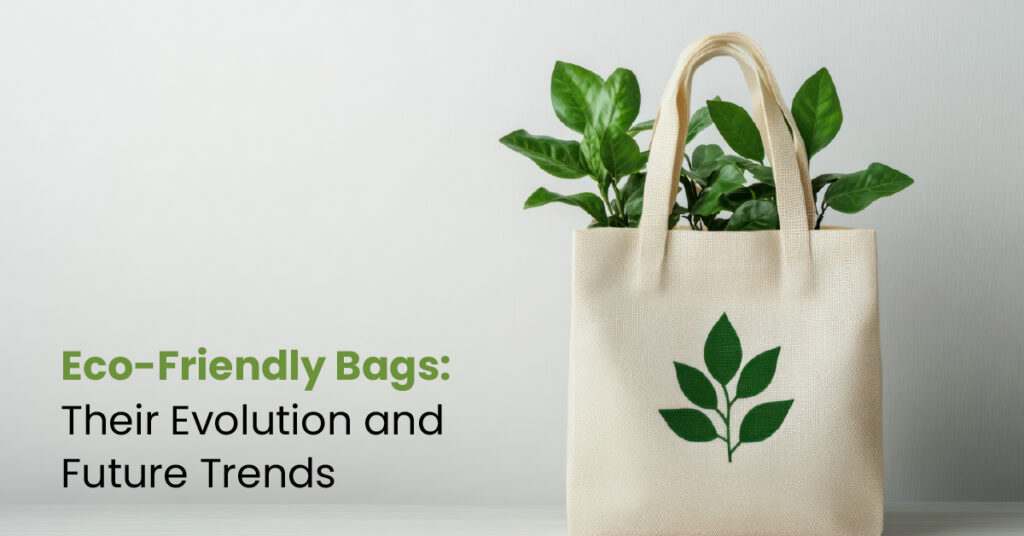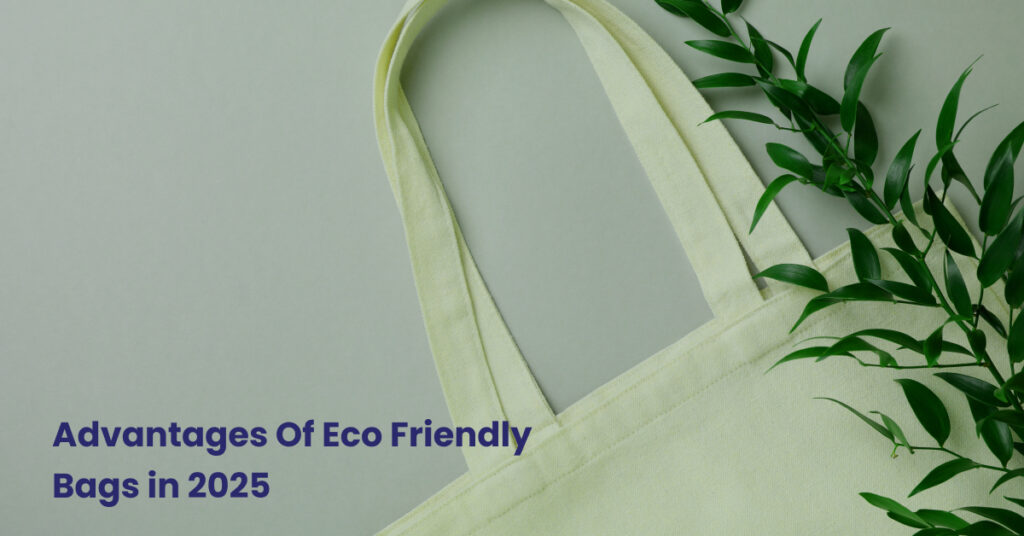Eco-Friendly Bags: Their Evolution and Future Trends
Market Overview of Retail Bags Globally, the retail or shopping bags market is also on the rise with expectations to grow from $16.17 billion in 2024 to $17.07 billion in 2025 to USD 26.40 billion by 2033, at a CAGR of 5.6% during the forecast period (2025-2033). This trend underscores a global shift towards more sustainable and convenient shopping solutions. As consumers increasingly seek eco-friendly alternatives, the demand for reusable shopping bags made from materials like cotton, jute, and non-woven fabrics is on the rise. This transition not only supports environmental sustainability but also aligns with the growing consumer preference for products that combine functionality with minimal environmental impact. The market’s expansion presents opportunities for innovation in design and materials, catering to the evolving needs of consumers while promoting a more sustainable future. The Evolution of Eco-Friendly Bags 1. Traditional Natural Fibre Bags: The First Sustainable Choice Before the mass production of non-biodegradable bags in the 1960s, people relied on natural fibre bags like: Jute Bags – Known as the golden fibre, jute bags have been widely used in South Asia for centuries. They are durable, reusable and biodegradable. Cotton Bags – Popular across the world, cotton bags provide a strong and washable alternative to synthetic material. Hemp Bags – Less common but gaining popularity, hemp is one of the strongest natural fibres and has a low environmental impact compared to cotton. Recycled Cotton Bags – Made from repurposed cotton fabric, these bags help reduce textile waste while retaining the softness and strength of regular cotton. Recycled Wool Bags – Wool, known for its natural insulation properties, is now being repurposed into durable and stylish bags, reducing landfill waste from discarded textiles. Rotto Bags – An innovative blend of natural and recycled fibres, Rotto bags offer a unique texture, strength and sustainability, making them a modern alternative to traditional shopping bags. 2. Why the World Needed a Change? The introduction of synthetic disposable bags in the mid-20th century revolutionized shopping due to their convenience, affordability and durability. However, their widespread use led to devastating environmental consequences: Ocean Pollution: Approximately 8 million metric tons of synthetic waste enter the oceans annually, posing severe threats to marine life. By 2025, about 250 million metric tons of plastic will likely enter the oceans. Landfill Overflow: Synthetic products can take up to 1,000 years to decompose, leading to long-term environmental pollution, clogging waste system and more. Harm to Wildlife: Many animals mistakenly eat, get trapped or entangled in discarded materials. Resource Depletion: The production of synthetic materials consumes valuable natural resources. Making the switch to biodegradable and recycled bags isn’t just an eco-friendly choice, it’s a step towards a future where convenience and sustainability go hand in hand. The sooner we adapt, the sooner we reduce waste and protect our planet for generations to come! 3. The Shift Towards Biodegradable and Recycled Bags As awareness grew about the negative impact of synthetic material, researchers and manufacturers developed biodegradable and recycled alternatives. Some key materials include: Recycled PET Bags: Made from discarded synthetic bottles, reducing landfill waste. Paper Bags: A classic alternative, but their production can contribute to deforestation if not sourced sustainably. The global paper bags market is projected to expand from USD 6.05 billion in 2024 to USD 7.47 billion by 2029, reflecting a compound annual growth rate (CAGR) of 4.3%. The Challenges of Adopting Eco-Friendly Bags While eco-friendly bags are a crucial step in the fight against synthetic material pollution, they face several challenges: 1. Higher Production Costs Compared to non-biodegradable bags, biodegradable and reusable bags are often more expensive to produce. Sustainable materials and ethical labour practices increase costs, making them less accessible to low-income consumers. 2. Limited Consumer Awareness Many consumers still opt for synthetic bags due to lack of awareness or the perception that eco-friendly bags are inconvenient. Widespread education and incentives are needed to encourage behavioural change. 3. Durability and Maintenance Concerns Some biodegradable bags break down too quickly if exposed to moisture. Cotton and jute bags require frequent washing to maintain hygiene, leading to higher water consumption. 4. Recycling Complexities Not all biodegradable bags decompose easily. Many require specific industrial composting facilities that are not widely available. Additionally, mixing biodegradable and traditional synthetic single-use bags in waste systems can hinder the recycling process. Despite these challenges, governments and brands are working to improve the accessibility and affordability of sustainable shopping bags worldwide. The Future of Eco-Friendly Bags: Emerging Trends The future of sustainable bags lies in technological innovation, circular economy models and changing consumer behaviour. Here are some exciting trends shaping the industry: 1. Smart and Multi-Use Bags RFID-Enabled Bags – Some brands are embedding radio-frequency identification (RFID) chips to track the sustainability impact of bags. Modular Reusable Bags – Designed for multiple configurations, these bags offer versatility and replace multiple single-use alternatives. 2. Plant-Based and Vegan Leather Bags Mushroom Leather Bags – Made from mycelium, a fungal network that creates a durable, compostable material. Pineapple Fibre Bags (Piñatex) – A sustainable by-product of pineapple farming, offering a stylish and cruelty-free alternative to leather. 3. Circular Economy and Upcycling Initiatives Recycled Textile Bags – Brands are repurposing old clothes and industrial textile waste to create trendy, reusable bags. Zero-Waste Initiatives – Some companies now offer return-and-reuse models, encouraging customers to return used bags for recycling. 4. Government Regulations and Incentives Many countries, including India, Canada and parts of the U.S., have implemented non-biodegradable bag bans to encourage the use of sustainable alternatives. Tax benefits and subsidies are being offered to businesses producing eco-friendly bags. How Consumers Can Make a Difference While businesses and governments play a crucial role in promoting eco-friendly bags, individual choices matter too. Here’s how consumers can contribute to a synthetic-free future: 1. Choose Durable, Reusable Bags Invest in cotton, jute, hemp or recycled PET bags that last longer and reduce the need for single-use alternatives. 2. Support Sustainable Brands Look for companies that prioritize ethical production, fair trade practices and recyclable materials. 3. Dispose



